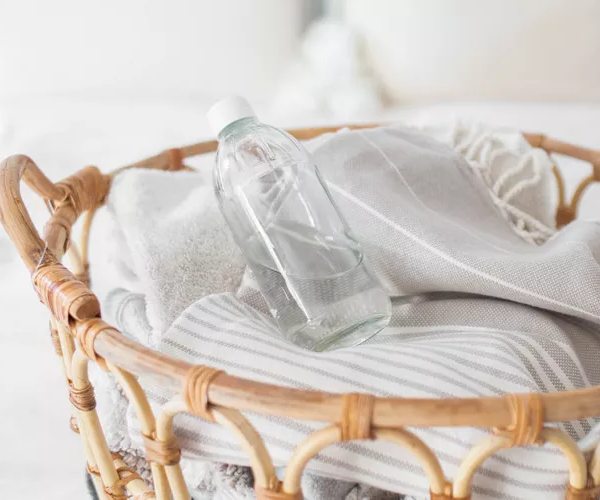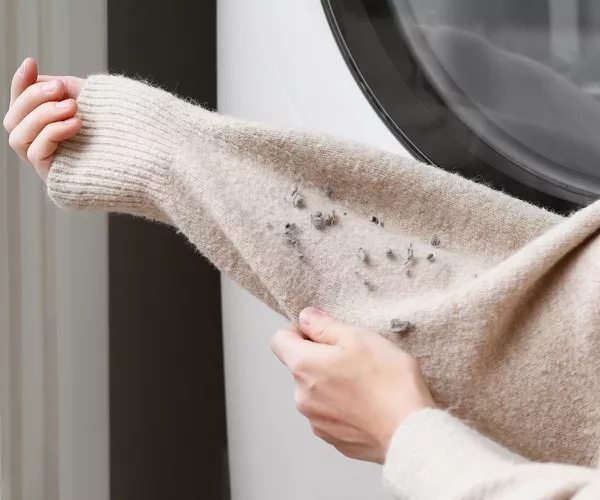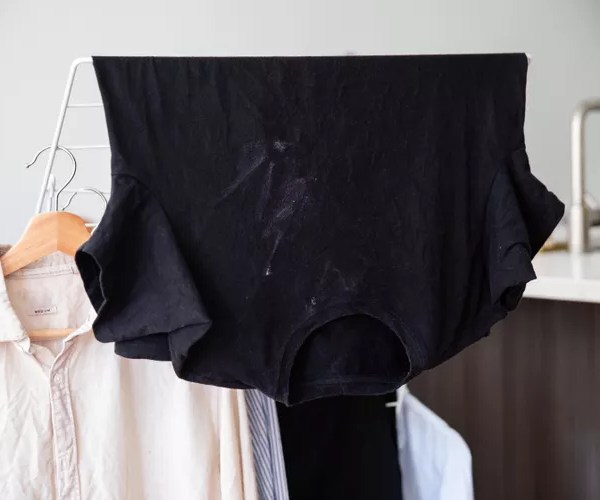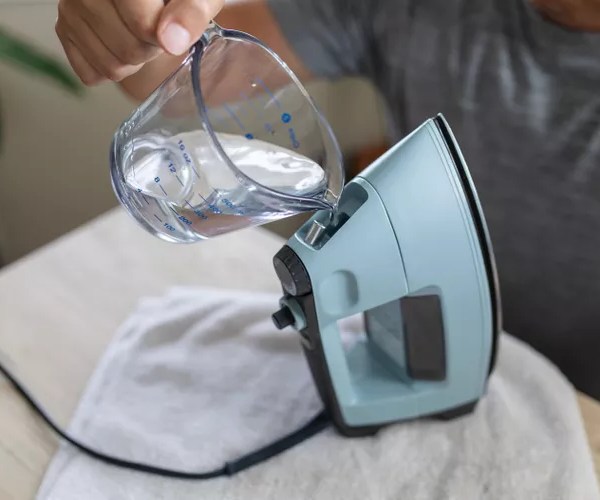If you use white vinegar properly in laundry, it can remove odors from clothes, strip laundry product buildup, and more.
Having said that, vinegar is not good for all laundry purposes and appliances. Therefore, it is necessary to learn when and where to use and not to use vinegar to keep both your laundry and your washer in proper condition. The good thing is that vinegar is inexpensive and safe to use in high-efficiency and standard washers. If you’re buying vinegar for laundry, choose distilled white vinegar. This doesn’t contain tannins (natural plant dyes) that can cause stains on clothes. If there is only cider vinegar, dilute it with water before working it directly on the clothes.
Below, we have mentioned some benefits of using white vinegar in laundry and when to avoid it.
Benefits of using vinegar in laundry
-
Banish Mildew Odor
Adding vinegar while washing clothes can get rid of any sour or moldy odors on towels. For that, fill the washer with hot water and warm water for dark-colored towels. Then, add 2 cups of distilled white vinegar and run a complete cycle. Then running a second complete cycle with detergent is necessary. This works wonders for tiny amounts of mildew and sour smells. If the mold issues and stains are larger, the treatment requires to be more aggressive.
2. Dissolve Soap Residue
The acetic acid in distilled white vinegar can dissolve left in fabrics by soaps and detergents. Add a half cup of distilled white vinegar to the fabric softener dispenser, or add the vinegar manually at the beginning of the rinse cycle.

Also, Read Get Rid of Mosquitoes With These Natural Fixes!
3. Brighten and Whiten Clothes
Vinegar is a great item to brighten dull clothes. If you want to get your white cotton dishcloths, underwear, and socks white again, simply add a cup of distilled white vinegar to a gallon of water in a large pot. Next, heat the solution to a boiling point, turn off the heat, and add the dingy items. You have to let them soak overnight and then launder them as usual.
4. Soften Fabrics Naturally
Distilled white vinegar is a natural fabric softener as it removes trapped body soil and detergent residue that makes or makes laundry scratchy. For this, simply use a half cup in the final rinse cycle instead of a commercial fabric softener.
5. Reduce Lint and Pet Hair
Vinegar’s use in the rinse cycle will help prevent pet hair and lint from the clothes. It is to be noted that vinegar shouldn’t be used in every wash cycle. If you think it is too soon to use vinegar in your laundry routine again, you can simply soak your clothes in the sink and wash them normally.

Add a half cup of white distilled vinegar to the fabric softener dispenser or you can also use it alternatively by adding it directly to the washer at the start of the rinse cycle. However, do not combine that with a commercial fabric softener.
6. Fight Underarm Odor
If you have a smelly underarm, vinegar is to the rescue. You can spray it onto clothes to remove perspiration odor and stains that are present on your washable white clothes. All you have to do is fill a spray bottle with undiluted distilled white vinegar and keep it on hand in the laundry room. Then, spray the vinegar directly on the underarm area, let it stay still, and work for 10 minutes before throwing the garment into the machine for washing.
If you feel that your fabric is stiff before washing, use a soft-bristled brush (an old toothbrush works well) to break up the residue. The vinegar allows to cut through residual deodorant left on clothing and prevent underarm yellowing.
7. Erase Hem Lines
Vinegar is very helpful in hiding marks from clothing alterations. To solve the problem of tiny holes being left along a seam or hemline when a garment is altered, all you gotta do is dampen a white cloth with distilled white vinegar keep it under the fabric on an ironing board, and press. The ironing temperature must be correct for the fabric and use a pressing cloth on top of the fabric to not have shiny marks.
8. Keep Dark Clothes Dark
Vinegar is one ingredient that prevents discoloration and dullness on dark-colored clothes by simply removing soap and detergent residue. Remember not to use vinegar every single time you require it to brighten up your dark clothing. As an alternative, you can also soak your clothing in the sink or rub, rinse, and then wash as usual. If it is safe to add vinegar to your clothes, just add a half cup of distilled white vinegar to the final rinse cycle.

9. Get Rid of Strong Odors
Vinegar also works wonders in removing strong odors like cigarette smoke, farm odors, and fast-food cooking odors.
For this matter, you have to fill a large sink or tub with lukewarm water and add 1 to 2 cups of distilled white vinegar depending on the load size of the laundry. Drop the stinky clothes and let them soak in the liquid overnight. Drain the washer and do the laundry as usual with a heavy-duty enzyme-based detergent.
If you want to remove odors from dry-clean-only clothes and furnishings like pillows and drapes, fill the bathtub with very hot water and add 2 cups of vinegar. The next step is to hang the clothes or fabric above the steaming water and close the door so that the steam can get into the fibers.
10. Clean Your Washing Machine
You can also clean your washing machine using vinegar. Just remove soap scum and clean the hoses by running a complete wash cycle with the washer empty using hot water and 2 cups of distilled white vinegar.
Then, using vinegar clean your washer. It can be done about four times a year, avoid this method more often so it can prevent damage to your appliance. If there is an automatic detergent or fabric softener dispensers, keep the distilled white vinegar in the dispensers to get rid of any residue buildup that may deter performance.
11. Clean a Sputtering Iron
You can clean your iron using vinegar as it helps to dissolve mineral deposits that can clog an iron’s steam vents and spray nozzles. First, fill the water chamber with a solution of equal parts distilled white vinegar and distilled water. Then hold the iron in an upright position on a heatproof surface and let it steam for a few minutes.

Once the iron cools down, rinse the tank using distilled water. Refill the iron and shake water through the vents onto an old piece of cloth. The last step is to iron an old cloth for a few minutes to remove any residue before ironing any wearable garments.
When Not to Use Vinegar in Laundry
- Vinegar must not be used with chlorine bleach. If mixed, the combination forms toxic chlorine gas.
- Vinegar and hydrogen peroxide should not be mixed to remove stains. If mixed, they form peracetic acid, a corrosive and irritating substance.
- Cleaning vinegar should not be used as a substitute for distilled white vinegar in the laundry. This is because cleaning vinegar has a higher acid content and can bleach dark-colored clothing.
- While vinegar is great at stripping odor-causing buildup from athletic wear, it can break down elastic fibers if used too much.
- It is recommended not to pour undiluted vinegar directly on dark-colored clothing as it can cause accidental bleaching of unstable dyes.
Where to Put Vinegar in Your Washing Machine
When adding vinegar to the washing machine, you must know where to add it. This can depend on the type of machine you have.
- Front-load washer: Add vinegar to the fabric softener dispenser when using a front-load washer.
- Top-load washer: Once the drum of the top-load washing machine has filled with water for the rinse cycle, add vinegar directly to it.
- When cleaning your washer: Add it to all the dispenser units (for a front-load machine) or directly to the washer drum (for a top-load machine).
FAQs
Q: Can you mix vinegar and laundry detergent?
A: Vinegar is best used as a pre-soak to remove odor or added to the rinse cycle as a fabric softener. The acid in vinegar can interfere with the cleaning ingredients in laundry detergent and make them less effective in removing soil.
Q: Is baking soda or white vinegar better for laundry?
A: Whether baking soda or white vinegar is better for laundry will depend on the task at hand. Baking soda works best as a natural fabric softener as well as controlling excess suds. White vinegar is great for brightening white clothing, increasing laundry detergent effectiveness, and removing mildew odor.
Q: Can I mix vinegar and fabric softener?
A: Yes, you can mix vinegar and fabric softener. Vinegar can even be used as a substitute for fabric softener. Do remember to use vinegar sparingly, however, to avoid damaging your washing machine. If you want an alternative to vinegar, you can use baking powder.
Q: Is cleaning vinegar the same as white vinegar for laundry?
A: No. Cleaning vinegar has up to six percent acid and is 20 percent stronger than white vinegar, which is typically around 95 percent water and 5 percent acid.
Also, Read Simple Tips for a Flawless Spring Cleaning of Your Home
